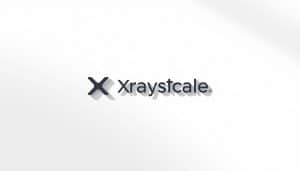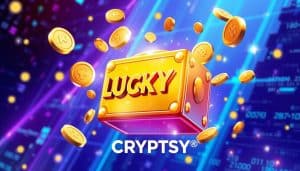Blockchain app development is about creating applications on blockchain networks to utilize their transparency, security, and decentralization. In this comprehensive guide, you’ll learn about the different types of blockchain networks, essential components, and the step-by-step process to develop, test, and deploy a blockchain app successfully.
Key Components of Blockchain Applications
Multiple critical elements are essential for the operational effectiveness, security, and dependability of blockchain applications. The presence of decentralized nodes across the network that hold a replica of all transaction history boosts both security and system robustness. By dispersing data storage across a network of such nodes, decentralized apps benefit from eliminating central points where failures might occur while ensuring data remains uncorrupted.
Within blockchain development lies smart contracts—pieces of code embedded in the chain—that autonomously execute agreements as preset conditions are fulfilled. These smart contracts negate the necessity for intermediaries, which leads to reduced expenses and heightened process efficiency. Platforms like Ethereum provide a solid foundation for building smart contract-based applications, making blockchain app development services essential for businesses looking to automate transactions securely and efficiently.
To guarantee consensus among all participants on its state without centralized oversight, blockchains employ consensus mechanisms or protocols like Proof of Work (PoW) or Proof of Stake (PoS). PoW is recognized for its high-security levels albeit being energy-demanding. On the other hand, PoS offers an alternative that’s less taxing environmentally but also boasts enhanced scalability properties. In any case, it’s through these mechanisms that transactions gain validation within the network.
Lastly, cryptographic hash functions play an indispensable role by securing data integrity inside each blockchain link. They generate unique outputs when applied to transactional information which cannot be reversed nor duplicated easily—a feature vital to identifying manipulation attempts swiftly thus preserving trustworthiness throughout every exchange within this digital framework.
Steps to Develop a Blockchain App
Creating a blockchain application is a methodical process that progresses from the initial concept to its final launch. This includes formulating an idea, establishing what the app will encompass, crafting the design and undertaking construction. An extensive guide on developing blockchain applications serves as a roadmap for navigating this meticulous journey with clarity and structure.
The development odyssey of a blockchain app encompasses various crucial stages: conducting market analysis, articulating the issue it intends to solve, selecting an appropriate blockchain platform, conceiving the user interface design, constructing a prototype for validation (proof of concept), actual coding and software creation, rigorous testing to ensure quality assurance. Culminating in rolling out the completed product into live environments followed by ongoing support and updates. Each stage plays an essential role in forging a dependable and scalable blockchain application.
Conduct Market Research
Conducting extensive market analysis is a crucial initial step when developing a blockchain application. Assessing the business worth of integrating blockchain into your app is essential to ascertain its necessity for your project’s success. A comprehensive grasp of prevailing market conditions significantly influences the triumph of products based on blockchain technology.
During brainstorm sessions, priority should be given to identifying the primary requirements and inclinations of the intended user base. Decisions throughout the process of providing app development services are bolstered by solid research findings, particularly in relation to adherence to regulatory standards.
Polishing the concept behind your app entails verifying whether implementing blockchain suits its purpose while keeping in mind both what potential users need and what is technically achievable.
Define the Problem Statement
Establishing a clear problem statement is crucial as it determines the scope and trajectory of the entire project. Crafting an effective problem statement highlights the specific issues that the app intends to solve, aligning it with overarching business goals. Such precision influences every aspect of an app’s development process, including its structure and design, steering decision-making toward meeting user needs and delivering intended benefits.
Once the core issue is identified, it becomes possible to outline business requirements and generate tailored ideas for app features. This foundational step guarantees that throughout the application development journey there’s a strong correspondence between functionality offered by the app and solutions provided for initially recognized business challenges.
Choose the Right Blockchain Platform
The selection of an appropriate blockchain platform is pivotal to the scalability, security, and functionality alignment in a blockchain application. A blockchain platform offers the essential framework necessary for crafting a decentralized application.
When determining which blockchain platform to employ, various elements need to be considered. These considerations encompass the intricacy involved in developing on that particular platform, performance aspects such as speed and efficiency of apps constructed on it, along with the robustness of its security protocols and cost implications associated with transactions.
Well-known contenders among blockchain platforms tailored for app development are Ethereum, Hyperledger Fabric, Binance Smart Chain (BSC), and Polkadot. Each provides unique capabilities catering to different requirements within the realm of decentralized applications.
Design the User Interface
Good app design significantly contributes to user adoption and satisfaction. UI/UX design in blockchain app development determines the app’s appearance and behavior, impacting user experience. User interfaces (UIs) should enhance usability for every app component.
Simplified interfaces make it easier for non-technical users. Streamlined navigation reduces learning curves. A user-friendly, intuitive, and accessible decentralized app provides a seamless experience. This is essential for blockchain applications. Visual designs enhance the appearance and feel of a blockchain app, boosting user engagement.
Develop a Proof of Concept (PoC)
A Proof of Concept analyzes the application and feasibility of blockchain technology in business concepts. A mockup or proof of concept in blockchain app development demonstrates product viability and visualizes the app in practice. A proof of concept demonstrates the core functionality of the app.
The proof of concept stage involves deciding which parts of the app will be on the blockchain and which will not. This step identifies potential challenges and ensures the app’s feasibility before full-scale development.
Coding and Development
Developing a blockchain app involves coding the backend, building the front-end, and integrating blockchain with other technologies. Creating a beta version of a blockchain app can take several months. The software development process for blockchain applications typically involves planning and execution stages, and utilizing blockchain development services can enhance this process.
Front-end and back-end developers, QA engineers, software architects, and project managers contribute to blockchain app development. Development can utilize in-house blockchain app developers or external development companies for expertise.
Testing and Quality Assurance
Routine examinations and audits are essential for discovering weaknesses in blockchain applications. By detecting and rectifying glitches through testing, the dependability and efficiency of these applications can be guaranteed.
As a result of thorough testing, there is an increase in the durability of these systems, a decrease in potential security flaws, and a boost to user confidence in blockchain technology.
Deployment and Maintenance
The deployment process consists of four stages: planning, development, deployment, and ongoing support. During the product launch, following standard protocols and ensuring the application’s deployment on various platforms is important.
Ongoing maintenance and support after deployment ensure the long-term functionality of a blockchain application.
Important Factors in Blockchain App Development

Developing a blockchain app requires a carefully crafted plan due to the distinctive framework, stringent security requirements, and intricate technical demands. When selecting an appropriate blockchain network for the project, developers need to consider both security considerations and how much control is necessary. It’s important that they acquaint themselves with what’s currently needed in the market and review available applications before embarking on creating their own.
Conducting thorough market research is essential when trying to comprehend consumer preferences as well as steering through various regulatory environments. For instance, emerging Decentralized Physical Infrastructure Networks (DePIN) are capitalizing on blockchain technology to enhance resource management more effectively.
To ensure that blockchain applications operate smoothly and securely, QA engineers must carry out extensive testing procedures. After launching such apps successfully into the market, employing potent marketing tactics becomes vital in drawing in new users while also keeping current ones engaged with your product or service.
Security Measures
Blockchain technology is innately secure owing to its built-in security features. The benefits are heightened security and a diminished likelihood of being compromised, thanks to decentralization. Strong encryption combined with distributed ledger technology guarantees the safety and reliability of data. Adding Virtual Private Networks (VPNs) into the mix takes security up a notch by securing data transmission through encryption.
Conducting thorough security audits plays a crucial role in ensuring that blockchain applications remain secure. Additional strategies for safeguarding these applications include conducting smart contract audits, implementing data encryption, managing access control rigorously, and engaging in consistent testing practices.
By fostering transparency and employing cryptographic measures for protection, blockchain technology stands as an effective barrier against fraudulent activities. Embracing an all-encompassing approach to security minimizes potential weaknesses and shields blockchain applications from various cyber threats.
Compliance with Regulations
Ensuring regulatory adherence is of utmost importance in the development of blockchain applications, particularly when managing sensitive information or conducting financial transactions. To prevent fines and maintain confidence among users, it’s vital that a blockchain app complies with regulations. Failure to comply can lead not only to punitive measures, but also erode trust from users and tarnish the reputation of the application. The inherent transparency and traceability offered by blockchain applications are key factors in fostering user trust, which is crucial for both compliance purposes and enhancing user engagement.
Incorporating Know Your Customer (KYC) procedures into decentralized finance (DeFi) apps is instrumental in achieving regulatory conformity while bolstering security measures. Ensuring that your blockchain app aligns with all pertinent legal requirements is fundamental for its successful launch as well as for sustaining its operation over time.
Scalability Solutions
To accommodate growth and manage rising transaction volumes, scalability solutions play a crucial role in blockchain app development. To improve the scalability and speed of transactions for blockchain applications, storing data off-chain is commonly favored since it provides quicker access and easier scaling capabilities.
The efficiency and ability to scale of an application are profoundly influenced by the chosen consensus protocol. Blockchain platforms that employ proof-of-work systems often experience slower processing times for transactions, which can impede scalability. Selecting appropriate scalability strategies alongside the right consensus protocols is imperative for the fruitful development of a blockchain app.
Popular Programming Languages for Blockchain Development
Selecting an appropriate programming language is crucial for optimizing the performance and effectiveness of blockchain applications. Solidity is chiefly utilized in the crafting of smart contracts, with a particular emphasis on those within the Ethereum network. JavaScript’s popularity within blockchain circles stems from its ability to expedite app development while providing seamless integration capabilities.
Python commands respect among blockchain developers because of its straightforward nature and comprehensive library support, which make it a solid option for developing both blockchains and smart contracts. Meanwhile, we’re still waiting. Go boasts significant acclaim due to its impressive speed and efficiency. These attributes are enhanced by its proficiency in managing concurrent processes, making it a preferred choice across various blockchain initiatives. Rust has been gaining traction as a robust alternative for blockchain endeavors thanks to its advanced memory optimization techniques alongside safety mechanisms.
Real-world Blockchain App Examples

Blockchain solutions are transforming a multitude of sectors such as finance, healthcare, and supply chain management. Real-world implementations of blockchain applications can be seen in platforms like Bitwage, Abra, and Coinpip which facilitate transactions across different industries. These innovative blockchain applications improve the way transactions are managed by bolstering security and data handling capabilities.
Finance and Banking
By utilizing its decentralized ledger, blockchain technology has the potential to diminish fraudulent activities and criminal endeavors within the financial sector. By cutting out intermediaries and removing administrative lags in financial exchanges, a blockchain project enhances process efficiency while also diminishing expenses related to third-party charges.
Prominent firms such as Credit Suisse, JPMorgan Chase, and Western Union are already incorporating blockchain into their business operations.
Healthcare
MedicalChain is a decentralized blockchain platform for medical data sharing. Blockchain technology enables easier and secure sharing of patient data. The healthcare app BurstIQ facilitates data sharing between patients and doctors while protecting data security.
Blockchain applications in healthcare facilitate secure sharing of patient data among multiple stakeholders.
Supply Chain Management
Blockchain technology facilitates detailed monitoring of items from their source to the final consumer within supply chains, thereby boosting transparency. Notable blockchain applications in the realm of supply chain management include initiatives like Provenance, Blockverify, SKUChain, Fluent, and the Pacific Tuna Project.
By greatly enhancing traceability in supply chains, blockchain contributes to increased efficiency and fosters trust.
Cost of Blockchain App Development
The cost to create a blockchain app is shaped by various factors such as the specific requirements of the project and which blockchain network is utilized. Development expenses tend to increase with app complexity, necessitating more experienced developers and extended development time.
Costs for developing apps are also dictated by industry demands. For example, healthcare applications may incur costs ranging from $30,000 to upwards of $100,000. Where the development team is based geographically can impact pricing, teams in Asia often offer lower rates compared to their North American counterparts.
When it comes down to selecting a model of development cooperation, this choice has a direct effect on costs. Opting for outsourcing usually presents itself as a cost-saver relative to employing an in-house team. For crafting a typical blockchain application through outsourcing or similar avenues might result in charges stretching from $20,000 up towards $60,000 but could surge beyond $200,000 if one delves into heightened levels of complexity and customization needs.
Summary
In summary, developing a blockchain app involves understanding the various types of blockchain networks, key components, and a step-by-step development process. It’s essential to consider important factors such as security measures, regulatory compliance, and scalability solutions to build a robust and scalable blockchain application.
























 Bitcoin
Bitcoin  Ethereum
Ethereum  Tether
Tether  XRP
XRP  USDC
USDC  Lido Staked Ether
Lido Staked Ether  TRON
TRON  Dogecoin
Dogecoin  Cardano
Cardano  Figure Heloc
Figure Heloc  WhiteBIT Coin
WhiteBIT Coin  Wrapped stETH
Wrapped stETH  Bitcoin Cash
Bitcoin Cash  Wrapped Bitcoin
Wrapped Bitcoin  USDS
USDS  Chainlink
Chainlink  Wrapped eETH
Wrapped eETH  Binance Bridged USDT (BNB Smart Chain)
Binance Bridged USDT (BNB Smart Chain)  LEO Token
LEO Token  WETH
WETH  Hyperliquid
Hyperliquid  Monero
Monero  Stellar
Stellar  Zcash
Zcash  Ethena USDe
Ethena USDe  Coinbase Wrapped BTC
Coinbase Wrapped BTC  Litecoin
Litecoin  Sui
Sui  Avalanche
Avalanche  Hedera
Hedera  Shiba Inu
Shiba Inu  sUSDS
sUSDS  USDT0
USDT0  Dai
Dai  Mantle
Mantle  PayPal USD
PayPal USD  Toncoin
Toncoin  World Liberty Financial
World Liberty Financial  Cronos
Cronos  Ethena Staked USDe
Ethena Staked USDe  Uniswap
Uniswap  Polkadot
Polkadot  MemeCore
MemeCore  Aave
Aave  USD1
USD1  Bittensor
Bittensor  Rain
Rain  Canton
Canton